Cannabis Business Plan Writers
By using strategic business planning, we can transform visions into successful cannabis ventures.

IN
RAISED
BUSINESS PLANS
Need a Cannabis Business Plan Writer?
Looking for a skilled cannabis business plan writer? Look no further. At Wisebusinessplans, we specialize in crafting comprehensive and customized business plans specifically for the cannabis industry. Our team of experts understands the unique challenges and opportunities within the cannabis market and will work closely with you to develop a strategic plan that sets you on the path to success. Trust Wisebusinessplans for your cannabis venture’s roadmap to profitability.
- Customized plans
- Extensive market research
- Detailed financial projections
- Regulatory compliance guidance.
- Ongoing support and expertise.
Schedule Your Consultation Today!
View Our Cannabis Business
Plan Sample
Our Other Sample Business Plans
What Our Cannabis Business Plan Includes:
Executive
Summary
Marketing
Strategy
Competitive
Advantages
Management &
Personnel
Investment
Analysis
Product & Service
Description
Company
Overview
Use of
Funds
SWOT
Analysis
Barriers to
Entry
Branding &
Marketing
Pro-Forma
Financials
How Do Business Plan Writing Service Work?
Schedule initial consultation to discuss needs, goals, and preferences.
Business concept, Target market, Resources, & Requirements.
Include Scope, Deliverables, Timeline & Pricing. Sign agreement.
Industry Trends, Regulations, Competition & Preferences.
Conduct research, analyze data, identify the market & evaluate the competition.
Objectives, Market analysis, Strategy, branding, Financials & exit plan.
Our Writers Review and revise the draft plan based on client feedback.
In the end, our writers deliver finalized plan in the agreed format (digital/print).

Featured In

Why Choose Us
Expertise and Experience
Experienced Cannabis plan specialists for expert guidance and assistance.
Customized Approach
Tailored plans designed specifically for your unique business needs.
In-Depth Market Research
Thorough market research and analysis to provide valuable industry insights.
Financial Projections
Detailed financial projections and strategic guidance for optimal performance.
Proven Track Record
Successful funding and client outcomes.
Timely Delivery and Support
On-time delivery and ongoing assistance.
Ready to secure the future of your business?
Cannabis Business Plan Writer
Starting a cannabis business requires careful planning and preparation. One essential aspect of launching a successful cannabis venture is creating a well-structured and comprehensive business plan.
Why is a Cannabis Business Plan Important?
A cannabis business plan serves as a roadmap for success. It provides a clear and detailed outline of the company’s goals, strategies, and financial projections. Here are a few reasons why a cannabis business plan is essential:
Securing Funding: Whether you’re seeking investors, loans, or grants, a well-developed business plan demonstrates your seriousness, professionalism, and dedication to potential financiers.
Strategic Decision-Making: A business plan helps you make informed decisions by outlining the market conditions, competitors, and target audience. It enables you to assess the feasibility of your business and make necessary adjustments.
Stakeholder Alignment: A comprehensive business plan ensures that all stakeholders, including partners, employees, and vendors, are on the same page regarding the company’s mission, vision, and objectives.
Here are 16 examples of cannabis business plan to inspire your own
Executive Summary
Provide a concise overview of your cannabis business, including its objectives, market analysis, operational strategy, branding and marketing approach, competitive advantages, and financial projections.
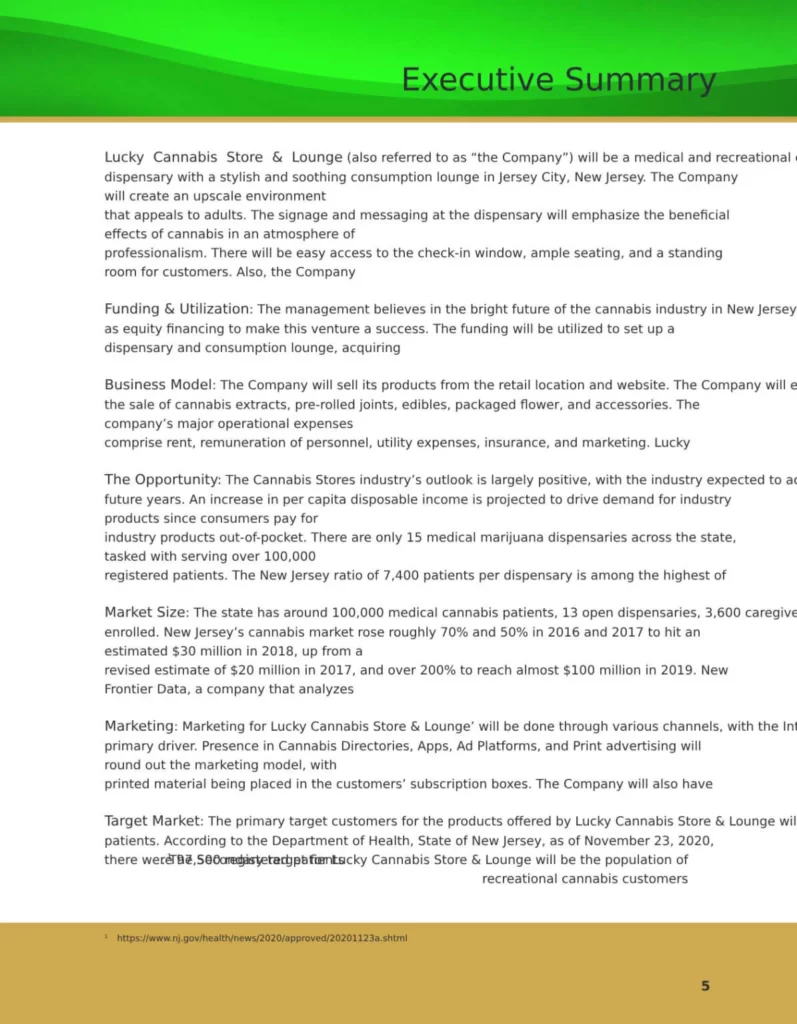
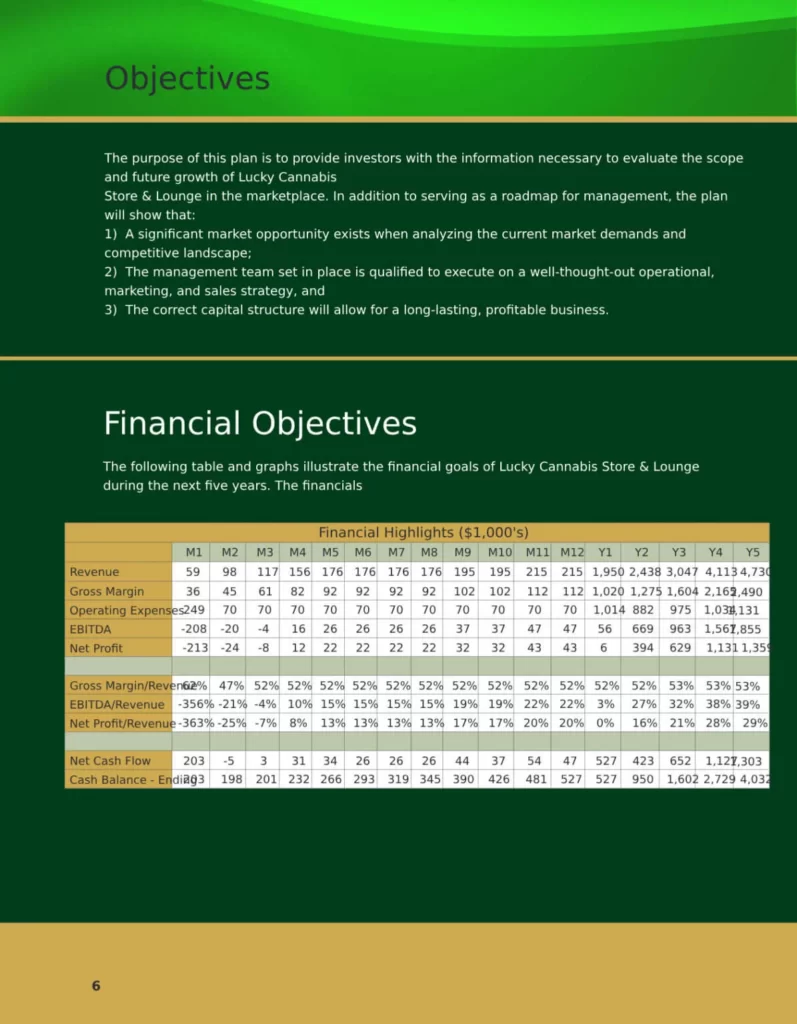
Objectives
Clearly define your business objectives, such as becoming a leading provider of high-quality cannabis products in a specific market, achieving a certain market share, or expanding into new geographic regions.
Start-Up Summary
Outline the start-up costs and funding required for your cannabis business, including expenses for licenses and permits, facility acquisition or construction, equipment, staffing, marketing, and initial inventory.
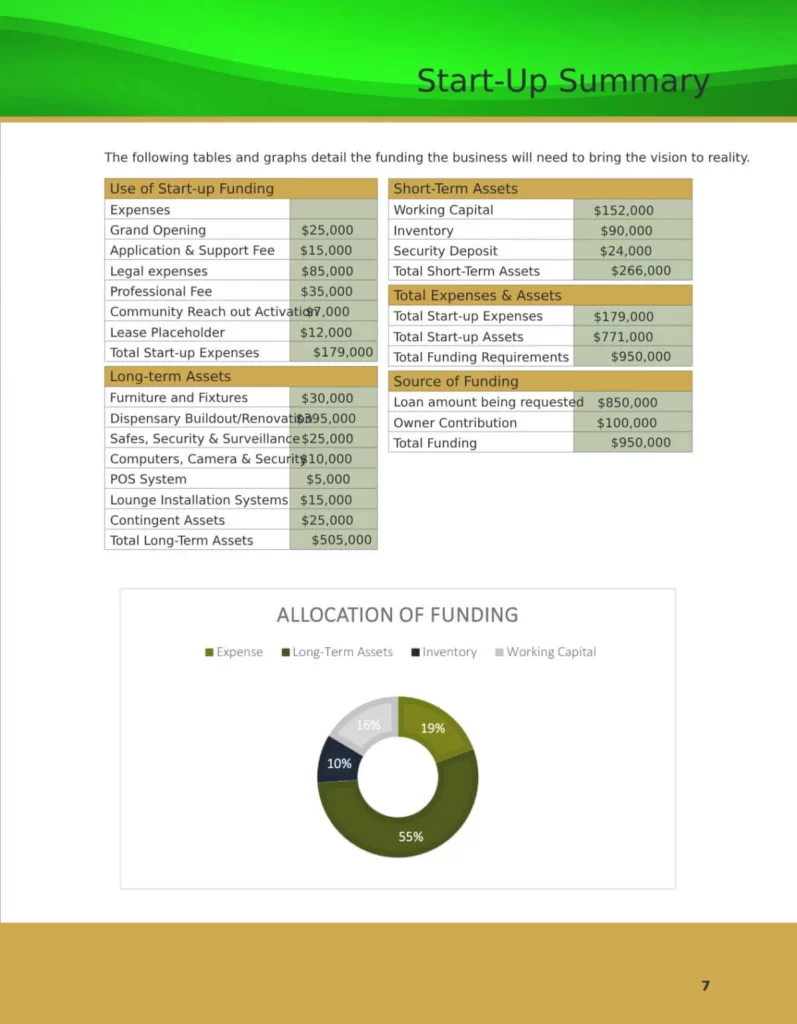

Market Analysis Summary
Conduct a comprehensive analysis of the cannabis market, including industry trends, target customer demographics, market size and growth potential, regulatory landscape, and competitive landscape.
Operational Strategy
Describe your operational strategy, including cultivation or manufacturing processes, sourcing of raw materials, quality control measures, supply chain management, distribution channels, and partnerships with suppliers or retailers.


Branding and Marketing
Define your brand identity, positioning, and values. Outline your marketing strategy, including product portfolio, pricing strategy, promotion channels (e.g., online, social media, events), packaging and labeling, and customer loyalty programs.
Marketing Campaign
Detail your marketing campaign plans, including launch activities, advertising campaigns, online and offline promotions, public relations efforts, and partnerships with influencers or key opinion leaders in the cannabis industry.
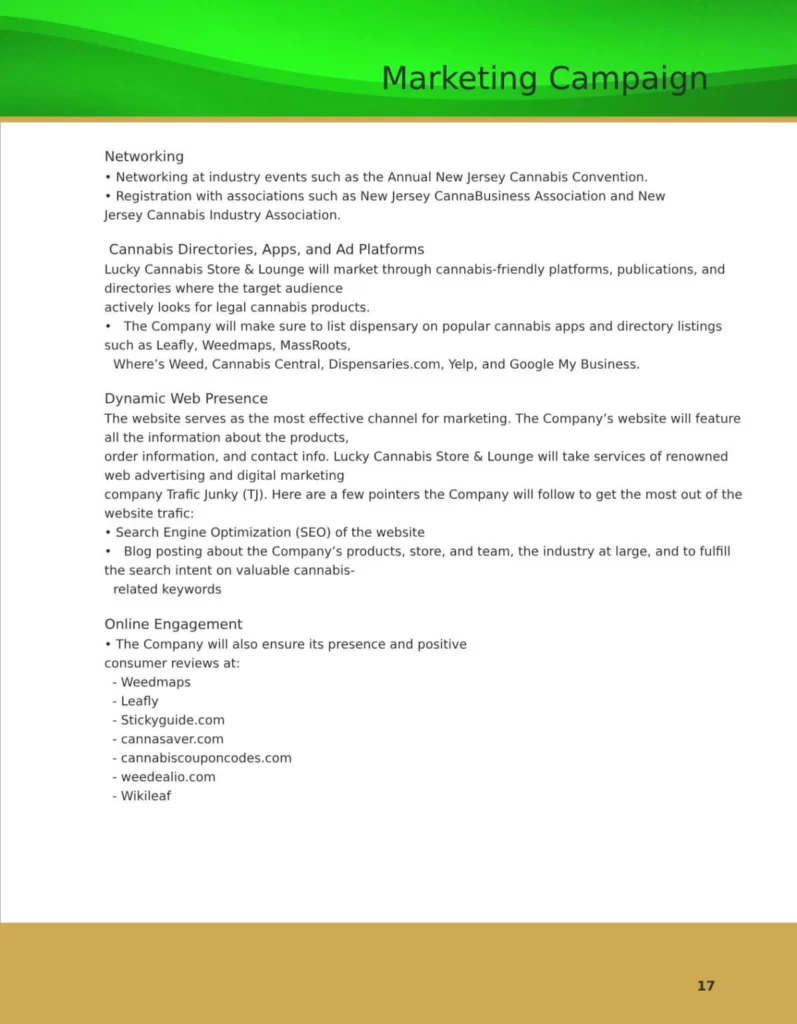

Competitive Analysis
Identify and analyze your main competitors, their strengths and weaknesses, market share, pricing strategies, product offerings, and marketing tactics. Assess their potential impact on your business and how you plan to differentiate yourself.
Revenue Forecast
Present a revenue forecast based on market research, pricing strategies, sales projections, and anticipated market share. Include projected sales by product category, distribution channel, and geographic region.
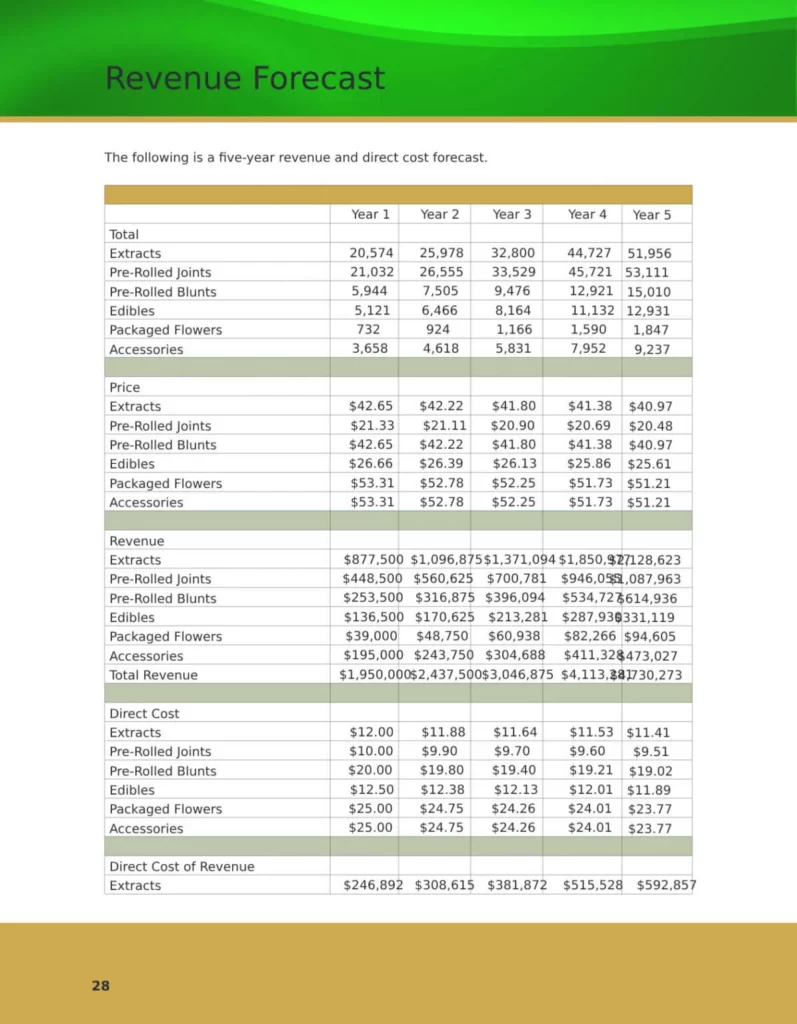
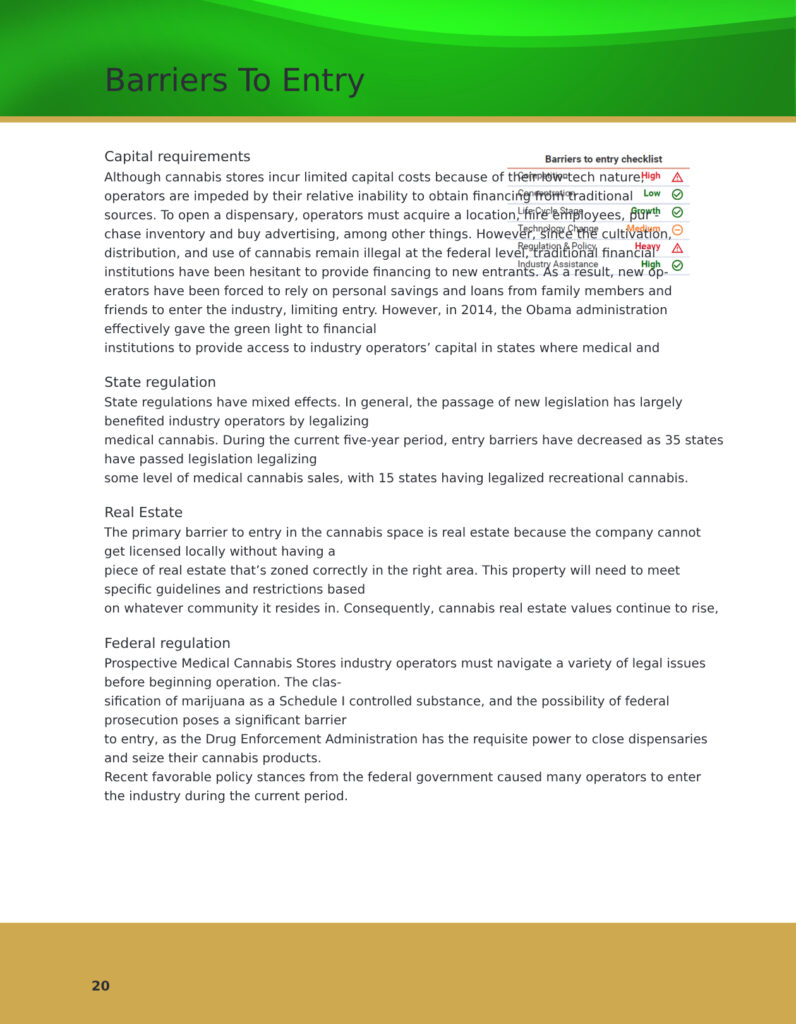
Barriers to Entry
Discuss the barriers to entry in the cannabis industry, such as strict regulatory requirements, high capital investment, limited access to banking services, and complex compliance obligations. Explain how you plan to overcome or mitigate these barriers.
SWOT Analysis
Conduct a comprehensive SWOT (Strengths, Weaknesses, Opportunities, Threats) analysis to evaluate your business’s internal strengths and weaknesses, as well as external opportunities and threats. Use this analysis to inform your strategic decisions.
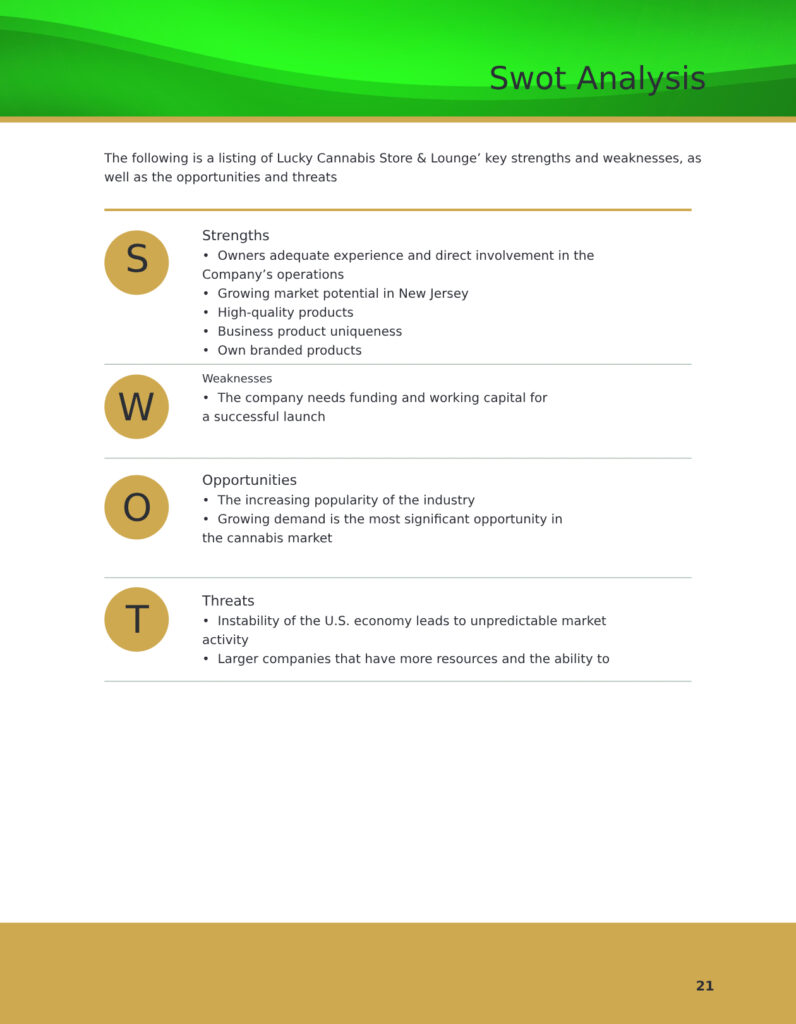
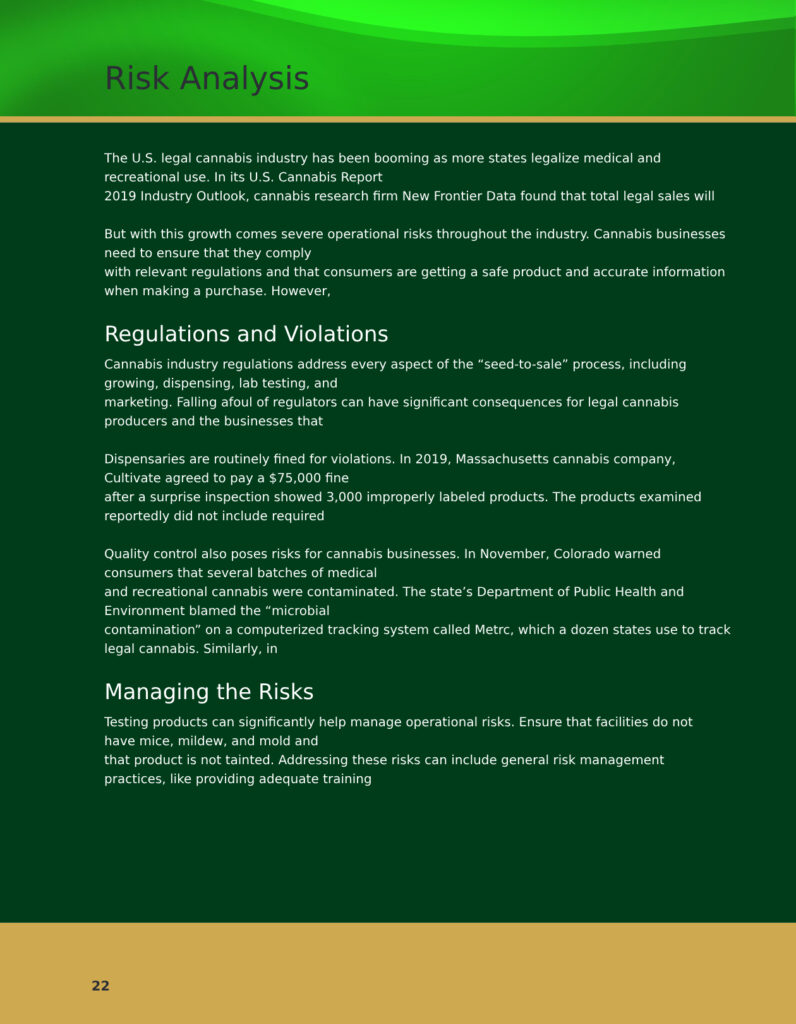
Risk Analysis
Identify and assess potential risks and challenges your cannabis business may face, such as regulatory changes, market volatility, supply chain disruptions, product recalls, or reputational risks. Develop strategies to mitigate these risks.
Exit Strategy
Outline your exit strategy, including potential options for investors or stakeholders, such as mergers and acquisitions, going public, or selling the business. Discuss the expected timeframe for the exit strategy and potential returns.
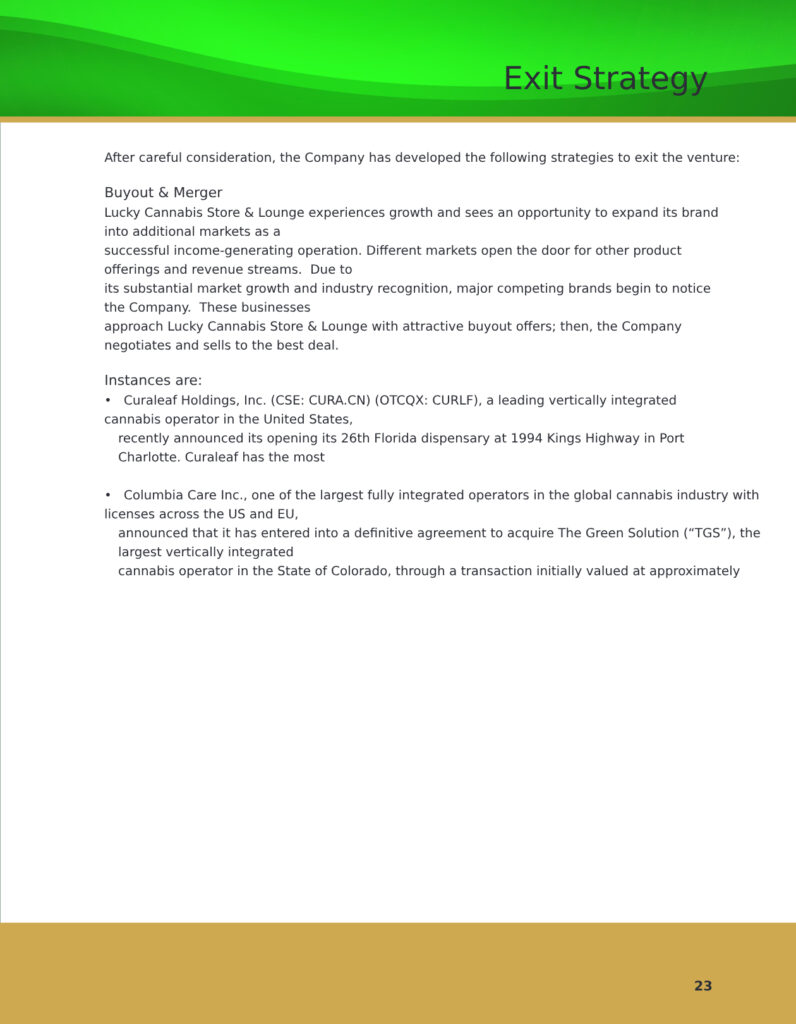
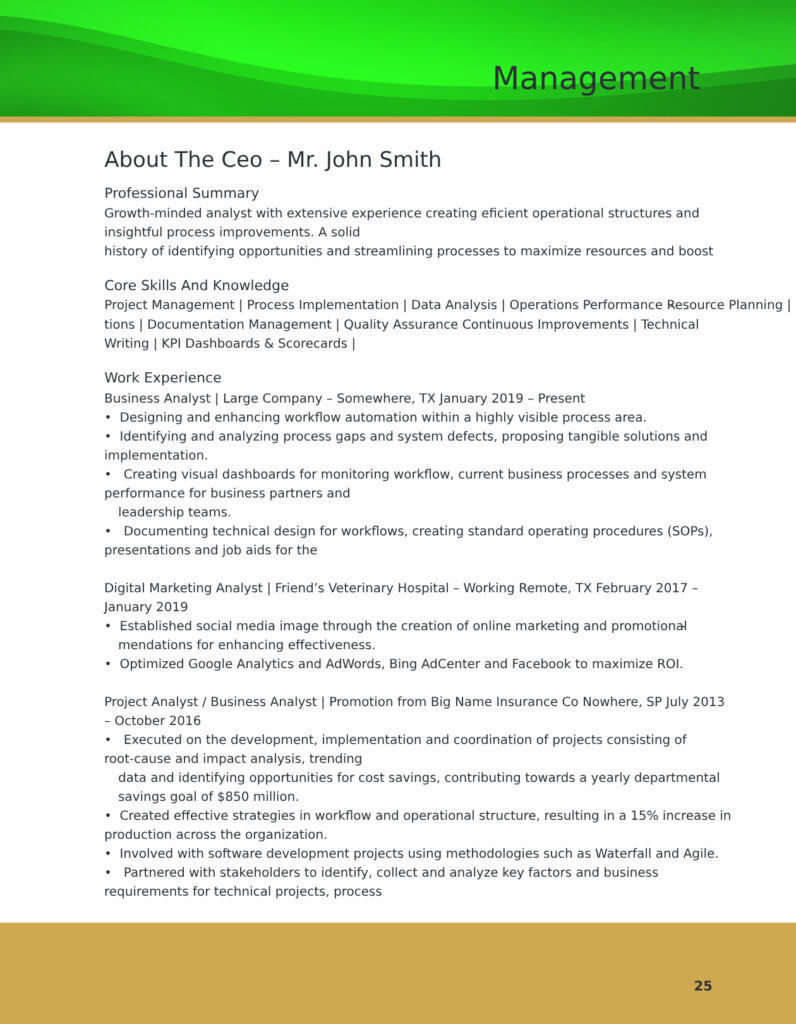
Management
Introduce your management team, highlighting their experience and expertise in the cannabis industry or relevant fields. Provide an organizational structure and outline key roles and responsibilities.
Breakeven Analysis
Conduct a breakeven analysis to determine the point at which your cannabis business will cover all its expenses and start generating profits. Identify the key variables affecting the breakeven point and develop strategies to achieve profitability.
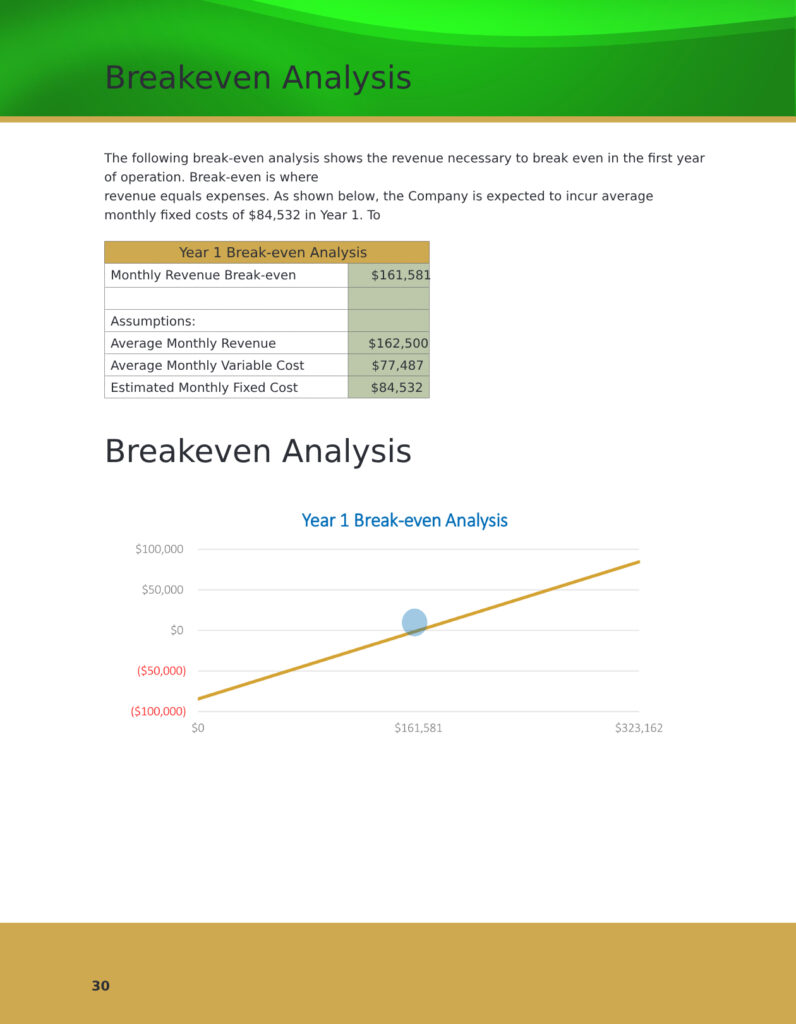
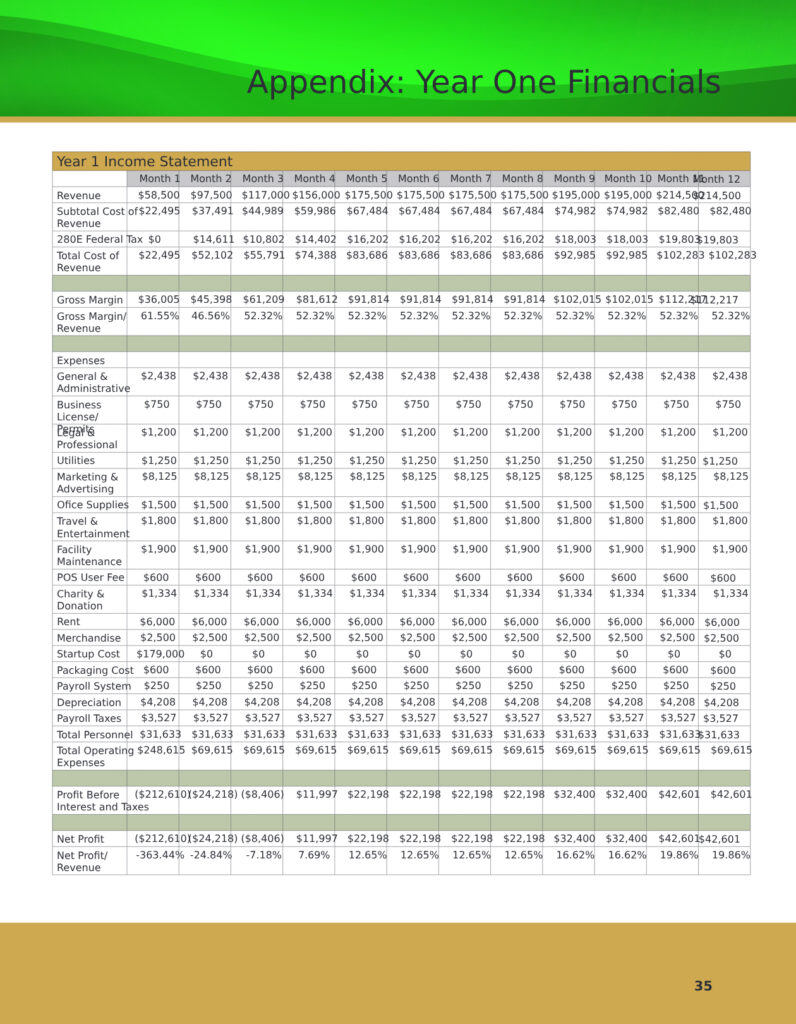
Appendix
Include any supporting documents, such as licenses and permits, market research data, financial statements, product catalogs, resumes of key team members, and legal documents.
Get in Touch
FAQ'S
A business plan serves as a roadmap for your cannabis business, outlining your objectives, strategies, and financial projections. It helps you secure funding, attract investors, make informed decisions, and navigate the complex regulatory landscape.
A comprehensive cannabis business plan should include sections on objectives, market analysis, operational strategy, branding and marketing, competitive analysis, risk analysis, financial projections, and an exit strategy. It should also include supporting documents in the appendix.
Common challenges in the cannabis industry include strict regulatory requirements, limited access to banking services, high capital investment, complex compliance obligations, and evolving market dynamics. These barriers can pose challenges for newcomers entering the industry.
To identify competitive advantages, assess your unique strengths, such as proprietary cultivation techniques, product differentiation, strong supplier relationships, or innovative branding strategies. Leverage these advantages to differentiate your business and gain a competitive edge.
Risk analysis involves identifying potential risks, such as regulatory changes, market volatility, supply chain disruptions, product recalls, or reputational risks. For each risk, develop strategies to mitigate the impact, such as contingency plans, compliance measures, or diversification strategies.
Revenue forecasting requires a combination of market research, sales projections, pricing strategies, and anticipated market share. Analyze data on consumer demand, market trends, and competitor performance to estimate your potential revenue.
A breakeven analysis determines the point at which your cannabis business covers all its expenses and starts generating profits. It helps you understand the sales volume or revenue needed to reach profitability. This analysis is essential for financial planning and decision-making.
To develop an effective branding and marketing strategy, define your target audience, create a compelling brand identity, differentiate your products, establish pricing strategies, choose appropriate promotion channels, and engage in targeted marketing campaigns.
The appendix section may include licenses and permits, market research data, financial statements, resumes of key team members, product catalogs, legal documents, and any other supporting materials that provide additional information about your business.
- Business Planning
- Bank Business Plan
- Investor Business Plans
- Franchise Business Plan
- Cannabis Business Plan
- Strategic Business Plan
- M&A Business Plan
- Private Placement
- Feasibility Study
- Pitch Deck
- Pitch Deck
- Market Research
- Sample Business Plans
- Hire a Business Plan Writer
- Business Plan Printing
- Business Valuation Calculator
- Business Plan Examples
- Real Estate Business Plan
- Business Plan Template
- Business Plan Pricing Guide
- Nonprofit Business Plan
- Business Plan Makeover
- Business Funding
- Business E-learning Series
- Business Assets

Proud Sponsor of
- 1-800-496-1056

- (613) 800-0227

- +44 (1549) 409190

- +61 (2) 72510077




















